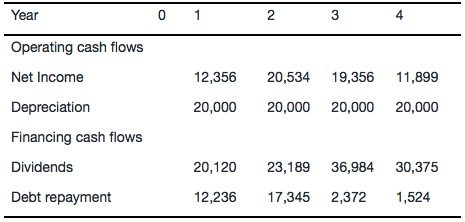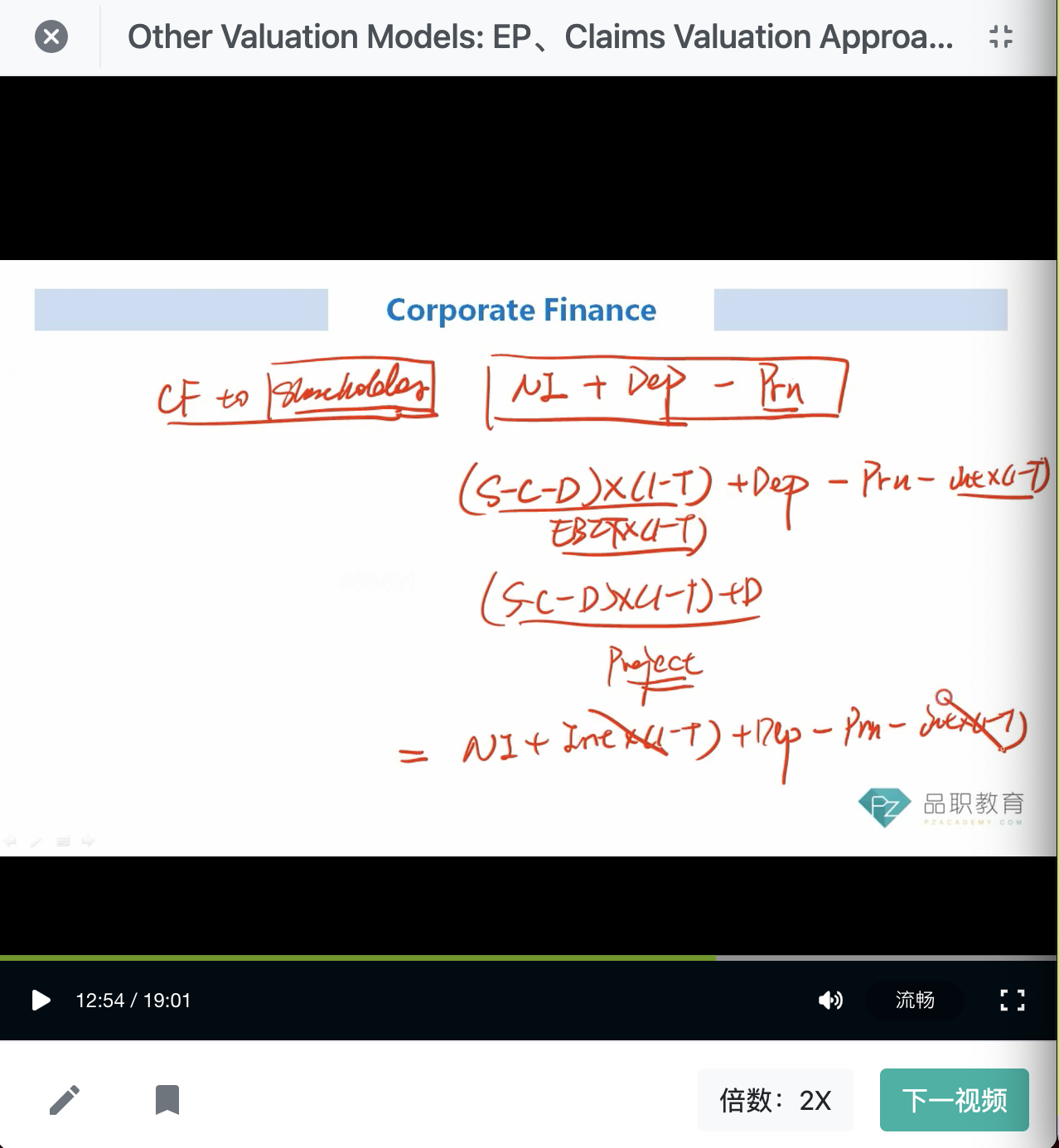NO.PZ2018101501000036
问题如下:
Anna is evaluating Company M which is going out of business in four years. The company is in the 25% tax bracket. The weighted average cost of capital and the cost of equity is 10% and 15%, respectively. The relevant distribution information is shown in the following cash flow statement. What is the value of equity at time zero?

选项:
A.113,696.29
B.85,988.53
C.76,714.45
解释:
C is correct.
考点:Other Valuation Models
解析:题目要我们求归属于股东的价值,只需将分配给股东的现金流( NI+Depreciation-principal repayment 即表格中Dividends)折现得到权益价值即可。
为什么这里加回depr时,是加回depr全部,不是加回depr*tax




